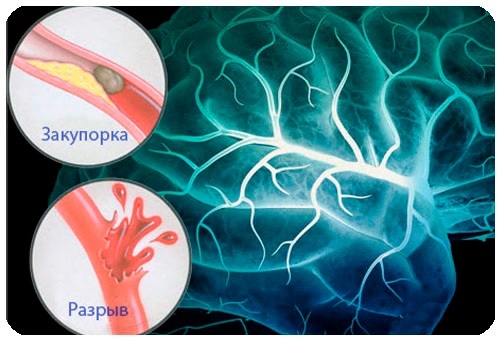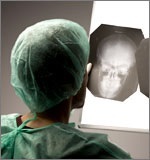Forecast for patients with coma 1 degree
Contents:
- Symptoms of Coma 1 degree
- Reasons for
- What is the danger of coma?
 Coma 1 degree of severity - a condition in which a person loses awareness of actions, but retains pain sensitivity and the ability to swallow liquid food. Is the easiest form of coma - a transitional situation, which ends with both recovery and death of the patient. The causes of this condition - the defeat of the nervous system with intoxication, hormonal crises, metabolic disorders, inflammation of the meninges and the brain itself, shocks.
Coma 1 degree of severity - a condition in which a person loses awareness of actions, but retains pain sensitivity and the ability to swallow liquid food. Is the easiest form of coma - a transitional situation, which ends with both recovery and death of the patient. The causes of this condition - the defeat of the nervous system with intoxication, hormonal crises, metabolic disorders, inflammation of the meninges and the brain itself, shocks.
Symptoms of a coma of the 1st degree
A coma of the first degree is characterized by a deafened state in which a person is able to perform simple movements( turn in bed, drink water, take liquid food).For coma 1,
- inhibits the response of pupils to light;
- divergent strabism due to disruption of the nucleus of the cranial nerves;
- eyeballs make movements, as during a fast sleep.
Since coma affects the brain or spinal cord, the tendon reflexes are strengthened and the cutaneous reflexes are weakened. Sometimes tendon reflexes and reaction to pain stimuli are weakened. There is a Glasgow Coma Scale, on which points are scored and the severity of the coma is determined. Analyzed reactions: opening of the eyes, speech, reaction to pain stimuli, questions of the doctor.
- Opening of eyes: missing - 1 point, present with painful irritation - 2 points, reaction to questions of the doctor, relatives - 3 points, arbitrary - 4 points.
- Response to verbal stimuli: absence of speech - 1 point, inarticulate speech in the form of separate sounds - 2 points, speech is articulate, but not on the essence of the given question - 3 points, confusion of speech - 4 points, clear answer to the question - 5 points.
- Motor reaction: lack of motor function - 1 point, abnormal extension in response to pain - 2 points, pathological flexion with pain stimulus - 3 points, patient withdraws, pulling limb - 4 points, resistance( repulsion) - 5 points, execution of doctor's commands- 6 points.
Coma of the first degree is determined by typing 7-11 points.
 Read why patients are injected into an artificial coma: indications, prognosis.
Read why patients are injected into an artificial coma: indications, prognosis.
Find out how the coma ends with diffuse axonal brain damage. Causes of coma.
Causes of
The coma of the first degree develops when the brain structures are damaged in pathological conditions:
- hepatic insufficiency;
- uremia;
- meningitis, encephalitis;
- traumatic brain injury;
- stroke;
- hormonal problems;
- circulatory disturbance in heart failure, shock;
- intoxication;
- oncological diseases;
- fasting;
- poisoning with atropine, barbiturates, insulin overdose.
 Acute disorders of cerebral circulation, craniocerebral trauma, inflammation of the meninges lead to the development of a stupor, which is gradually aggravated before the deep inhibition of the central nervous system. Oncological formations in the brain, abscesses cause inhibition of the central nervous system due to pressure on the brain structures and general intoxication.
Acute disorders of cerebral circulation, craniocerebral trauma, inflammation of the meninges lead to the development of a stupor, which is gradually aggravated before the deep inhibition of the central nervous system. Oncological formations in the brain, abscesses cause inhibition of the central nervous system due to pressure on the brain structures and general intoxication.
To pathologies that provoke a coma of the first degree, includes endogenous intoxication in hepatic insufficiency. The patient develops cerebral edema and a violation of the function of the structures. With severe liver disease( cirrhosis, hepatitis, hepatosis), poisoning occurs with the products of the body's vital activity.
Toxic substances enter the portal vein of the liver from the intestine. However, due to the insufficient detoxification function of the gland, the poisons( phenol, cresol, putrescine, cadaverine, ammonia) from the intestine are not neutralized. As a result, self-poisoning of the body and inhibition of the functions of the central nervous system occur. This leads to hepatic encephalopathy and coma.
Uremic intoxication in renal failure also contributes to braking of the brain. The lack of thyroid hormones, hypofunction of the pituitary gland, adrenals can lead to a coma of a first degree.
Insulin coma of the first degree develops as a result of hypoglycemia( a sharp drop in blood glucose, the main substrate for brain cells).In this case, the dysfunction of the central nervous system is associated with energy deficiency in neurons. Diabetic coma arises from the accumulation in the blood, and then in the brain, of products of the decomposition of fatty acids - ketone bodies. These toxic substances cause damage to the vessels of the brain, cortex and subcortical structures. As a result of ketoacidosis, CNS inhibition occurs.
In intoxications both from the inside and from the outside, the body tries to get rid of toxic substances through the mucous membranes( in particular, the stomach).Therefore, with ketoacidosis, uremic intoxication, vomiting, preceding a coma, is possible.
 Perinatal injury of the central nervous system of the third degree of severity.
Perinatal injury of the central nervous system of the third degree of severity.
Read what happens when toxic encephalopathy occurs when poisons are poisoned.
Consequences of contusion of the brain and spinal cord: a prognosis for patients.
What is the danger of a coma?
With comatose disorder, it is necessary to establish hemodynamics to eliminate brain hypoxia. When intoxication detoxify. Treatment of uremic coma of the first degree - hemodialysis. If the coma is caused by hypoglycaemia, glucose is injected.
In shock states, the increase of intoxication, brain tissue is in energy deficiency. Consequences at a coma of 1 degree:
- Deepening of a coma.
- Death.
- Increase in energy deficiency and aggravation of oxygen starvation of the central nervous system, death of neurons, disability as a consequence.
Coma 1 degree, the duration of which depends on the correct diagnosis and timely treatment, is relatively easy, but at the same time a dangerous condition. Without treatment, a coma can go deeper. The prognosis for coma 1 degree is favorable in most cases.
write the question in the form below:



